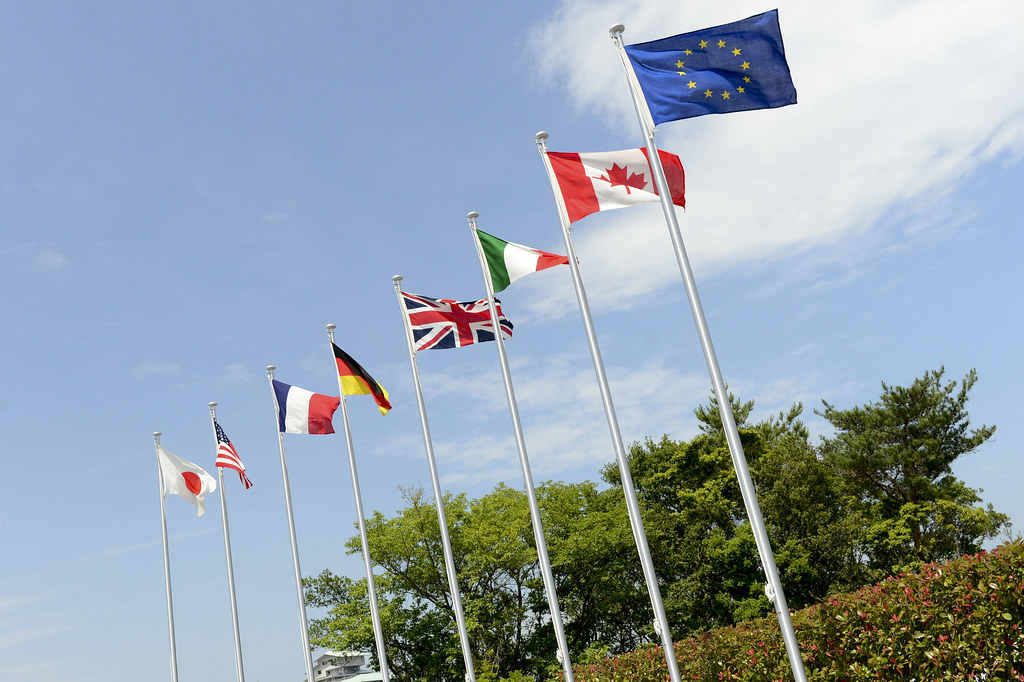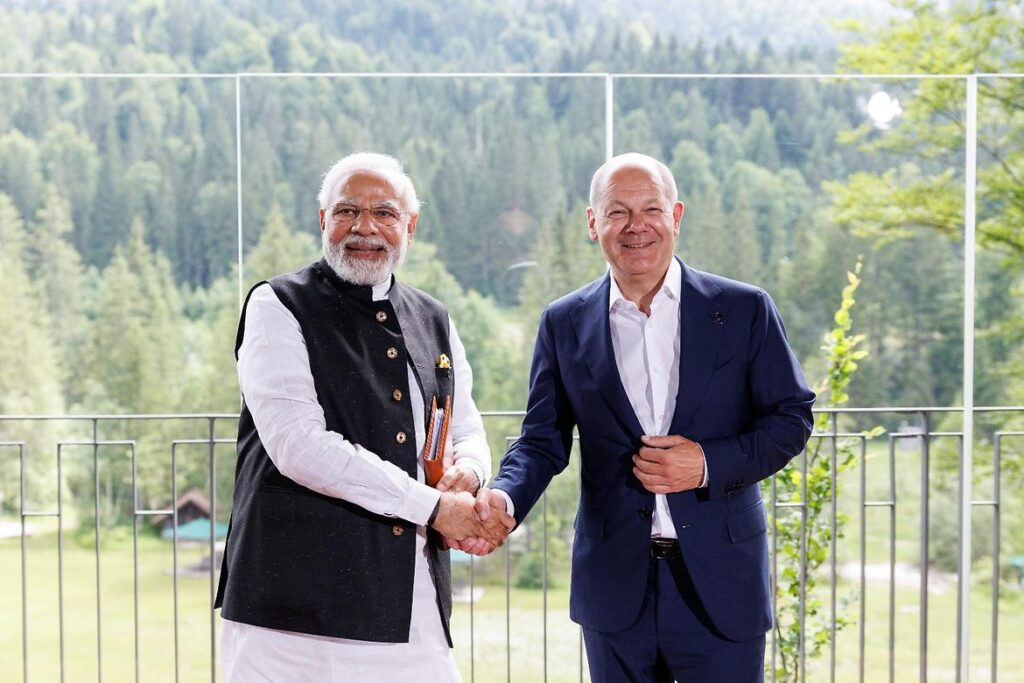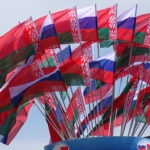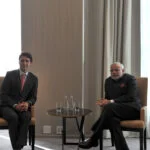The 48th G7 Summit, held amidst severe global challenges ranging from the ongoing Russia-Ukraine war, climate change and supply chain constraints, holds a vital position in the current world order. The leaders of the member countries met in Germany from 26th to 28th June 2022. Ukraine President Vladimir Zelensky attended the summit virtually.

Image courtesy-G7 Germany
The members of G7, the developed industrialised economies, managed to present a common front. It issued a standalone G7 statement in support of Ukraine, committing to provide unconditional financial, humanitarian, military, and diplomatic assistance to Ukraine. G7 also reiterated that it would stand by Ukraine as long as needed, which could be considered a very recommendable step.
G7: Then and now
France and Germany, together with Great Britain, Italy, Japan, and the United States, convened in 1975 in France to deal with the global economic crisis that arose in the 1970s. It mainly focused on the economic problems of the 1970s, such as the oil crisis and the collapse of the system of fixed exchange rates set by the Bretton Woods Summit.
The G7 has now become an informal organisation of major industrialised countries like Canada, France, Germany, Italy, Japan, the UK and the USA, and the European Union. Canada, not a part of the 1975 meeting, joined the grouping at the first formal summit held in Puerto Rico in 1976.

The G7 consists of the UK, the USA, Canada, Italy, Germany, France, Japan and the European Union
The Secretary General of the Soviet Union, Mikhael Gorbachev, was invited to the 1991 London summit for talks. After that, Russia became a permanent member of the G7 in 1998, and the group thus became the G8. However, the G8 did not last for long. Russia was expelled from this group after it annexed Crimea in 2014. Then the organisation again came to be known as the G7.
However, today’s G7 is different from the G7 of the 1970s. Currently, the G7 countries represent 10% of the world population and control over 31% of the global GDP. They also contribute about 21% of the global Carbon Dioxide emissions.

G7 countries are considered the major players in global trade, particularly the US and Germany, among the world’s major exporting countries. Both the countries have sold goods worth over one trillion US dollars to foreign countries in 2021.
Russia-Ukraine war – A brief
In February 2022, Russia’s invasion of Ukraine began with air strikes and missile attacks on Ukraine’s military targets, followed by troops and tanks across the country’s northern, eastern and southern borders. Although Putin claimed it was a “special military operation”, the act was a full-scale invasion.
“Russia’s attack on Ukraine kick-started another war era on European soil.“
There have been thousands of casualties, and over half a million Ukrainians were forced to flee their homes in these five months.
Outcomes of the 2022 G7 Summit
Germany presided over the 48th G7 Summit in 2022. The G7 leaders met in the tranquil surroundings of the Bavarian Alps in southern Germany. They agreed to invest hundreds of billions of dollars in global infrastructure to help developing countries and counter China’s drive to exert influence in emerging economies through large-scale investments.

Image courtesy-G7 Germany
However, the war in Ukraine dominated the three-day meeting of the world’s wealthiest democracies, including the global economic impact of Moscow’s invasion.
“The G7 has always been divided on how to tackle the world’s problems. This year’s Summit was neither different. The leaders had plenty to talk about but little to offer.”
The G7 continues to prevent Russia from benefiting from the war through the ban on imports of Russia’s gold. The overall message is one of unity in the face of aggression.
India was invited to the summit to support the member nations’ decision to isolate Russia completely. They requested India to cooperate in restricting the purchase of Russian oil and stop carrying out trade with Russia by using the Rupee-Ruble mechanism as it bypasses the sanctions imposed by the US on Russia. They also requested Indian PM to lift the ban on wheat exports. However, the PM of India turned down all these requests for the time being.
The “powerless” global powers
A pertinent question arises: Does the standalone G7 statement issued in support of Ukraine pose a challenge to Russia?
Through the standalone G7 statement, Russia was warned that it would have to face dire consequences if it used chemical, biological, and nuclear weapons. It also mentions that harsher sanctions would be imposed on Russia. These sanctions include raising tariffs on Russian products targeting gold exports, capping oil prices, and restricting access to technology.

Image courtesy-Reuters
The so-called “Global powers” did nothing to avert this war when Russia was about to invade Ukraine. Instead, they were busy running talk shops and issuing hollow warnings to Russia through organisations like the G7. Russia’s relentless attack on Kyiv was enough to expose the powerlessness of these global powers. Ironically Russia was busy launching missile attacks on Ukraine’s capital Kyiv while the summit was being held in Germany.
How did G7 fail in deflecting the course of events?
If the G7 had great concern about Ukraine, they should have given the latter membership and deployed all NATO resources across the Ukrainian border against Russia. EU and US will never do that. Because giving EU membership to Ukraine, will lead to large-scale migration from Ukraine to other parts of Europe.
Moreover, providing weapons to Ukraine was also postponed until the NATO summit in Madrid. It reflects the real intentions of the global powers. It is a well-known fact that the sale of arms is the primary source of income for western countries. Weapons will only be sold when there is a conflict or war between two nations.

The US supplied the rocket system to Ukraine as part of the former’s military aid package
Conclusion
The Western countries are adding fuel to the fire. They are also promoting the arms race by providing Ukraine with advanced weapons on a large scale. These western countries will ultimately profit from the increase in an arms race. The West only intends to earn benefits by trading arms ethically or unethically.
More articles related to the Russia-Ukraine war:
THE UKRAINE CRISIS: ACCELERATING THE THREAT OF THE ARMAMENT RACE
Sanctions on Russia: Role of the United States in the Russia-Ukraine Conflict
About the Author

Anwar Shahid is an Academic professional in International Relations and Political Science with a broad knowledge of Research and Analytical Skills. He is currently working as an Assistant Professor in Political Science at Beja Model College of Arts and Science, Nettanige, Kasaragod, Kerala. He has keen interest in the areas of International Cyber Security, Contemporary International Politics, Foreign Affairs, Diplomacy and Indian Politics.







[…] The G7 Summit: Implications on the Russia-Ukraine War […]